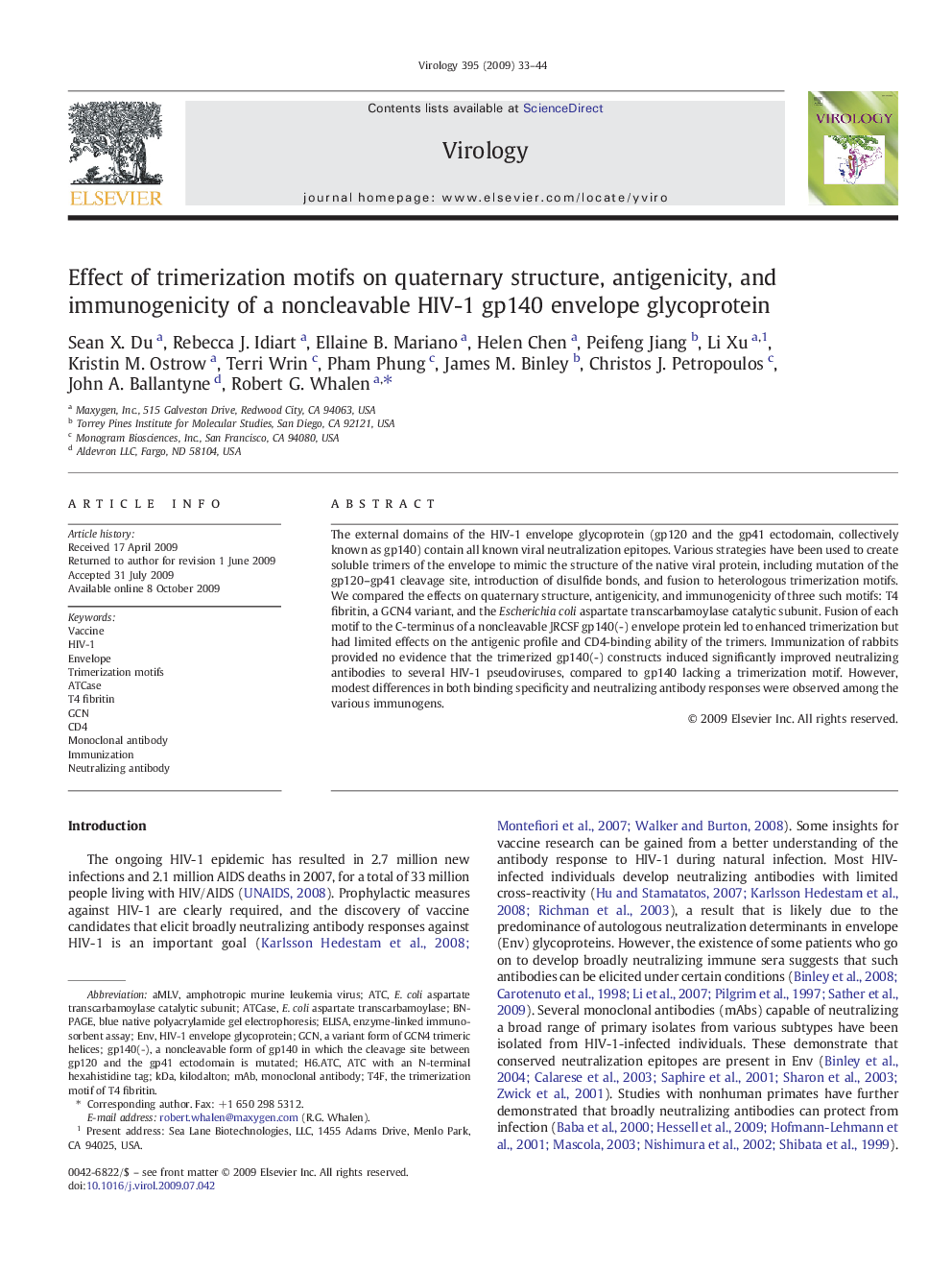| Article ID | Journal | Published Year | Pages | File Type |
|---|---|---|---|---|
| 3425339 | Virology | 2009 | 12 Pages |
The external domains of the HIV-1 envelope glycoprotein (gp120 and the gp41 ectodomain, collectively known as gp140) contain all known viral neutralization epitopes. Various strategies have been used to create soluble trimers of the envelope to mimic the structure of the native viral protein, including mutation of the gp120–gp41 cleavage site, introduction of disulfide bonds, and fusion to heterologous trimerization motifs. We compared the effects on quaternary structure, antigenicity, and immunogenicity of three such motifs: T4 fibritin, a GCN4 variant, and the Escherichia coli aspartate transcarbamoylase catalytic subunit. Fusion of each motif to the C-terminus of a noncleavable JRCSF gp140(-) envelope protein led to enhanced trimerization but had limited effects on the antigenic profile and CD4-binding ability of the trimers. Immunization of rabbits provided no evidence that the trimerized gp140(-) constructs induced significantly improved neutralizing antibodies to several HIV-1 pseudoviruses, compared to gp140 lacking a trimerization motif. However, modest differences in both binding specificity and neutralizing antibody responses were observed among the various immunogens.
